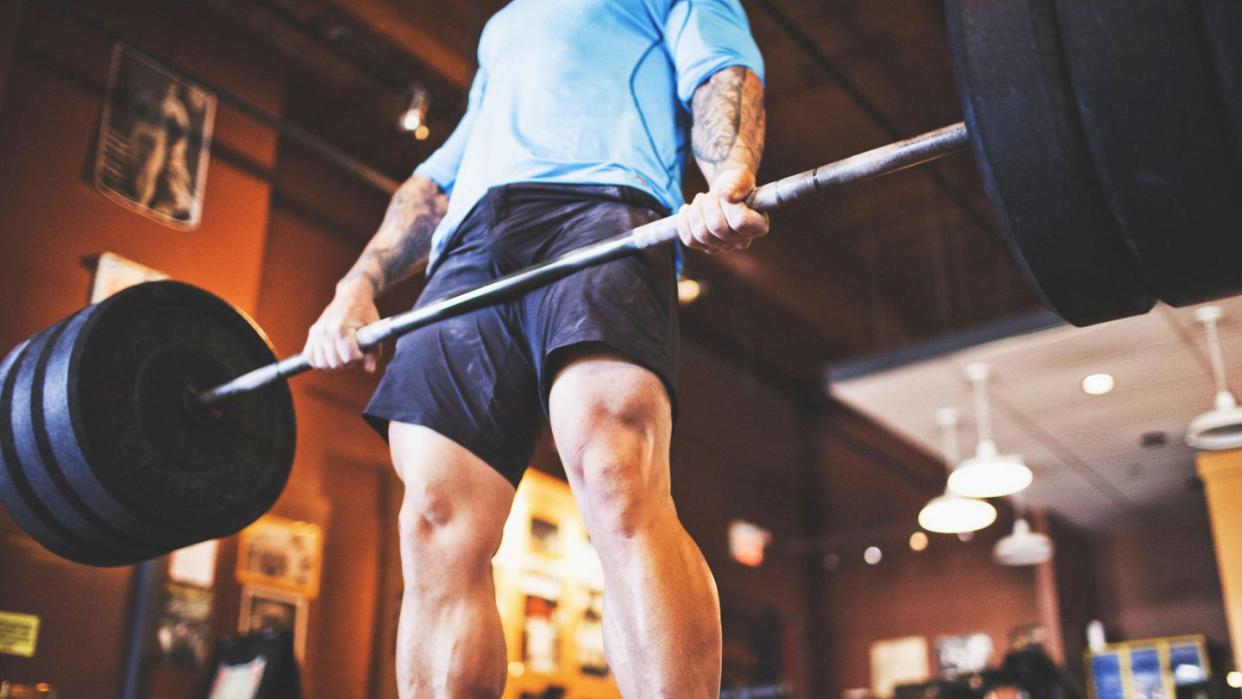Get a Grip for Even More Workout Gains

This is Your Quick Training Tip, a chance to learn how to work smarter in just a few moments so you can get right to your workout.
THE SMALLEST DETAILS can sometime make all the difference. When you're lifting weights, there are plenty of factors that can make or break a good rep, from positioning and posture to the slight shifts you make to initiate movement.
One small detail that can actually have major consequences for your gains—especially as you progress to the highest levels of your training—is the orientation of your grip.
What Are the Different Strength Training Grips
Your grip will come into play when you're performing exercises that require you to hold weights in your hands, most likely to push, pull, or carry. Many lifters only tend to think about grip when they perform exercises using barbells, but considering grip orientation is important when you're using other implements too, like dumbbells, kettlebells, and specialty equipment (like trap bars).
The most common weightlifting grips are pronated (overhand), which is what you typically use when performing a pullup or strict deadlift, and supinated (underhand), which is typically used in exercises such as the chinup and dumbbell curl. Other options include an alternated or mixed grip, in which one hand is pronated and the other is supinated, often used by deadlifters pulling heavy weight, and a neutral grip, in which both palms face each other (think: hammer curl). For advanced lifters, there's the hook grip, which entails "hooking" your thumb between the bar and wrapping your pointer and middle fingers around it for a more secure hold.
Here’s why grip matters for your gains: Even slight variations in hand position during a lift can totally change which muscles are targeted. Take the dumbbell curl, for example. Using the standard supinated grip targets your biceps, but if you rotate your hands 90 degrees to a neutral grip, the emphasis shifts to a different elbow flexor, the brachialis. If you rotate your hands 90 degrees again (to a pronated grip), you’ll target yet another elbow flexor, the brachioradialis.
There's also security. As you progress to heavier weights in compound lifts like the barbell deadlift, you might find that you have a tough time holding onto the bar—in other words, your point of failure is your grip, not the muscles you're directly training. If your ultimate goal is building your lower body muscles or crushing the heaviest lift possible, you could switch from a standard pronated grip to a hook or mixed grip (especially if you're not going to use grips) to support the weight.
Pronation vs. Supination
How do you choose between using a pronated vs. supinated grip? That will largely depend on the exercise. You wouldn't perform a standard deadlift with a supinated grip, for example, since you'd be limiting your capacity to hold onto the bar—you'd choose between a pronated or mixed grip. Outside of utility, the main difference between the two grips will be the slight variance in muscle recruitment, which will in turn lead to shifts in focus for the muscle groups you're targeting.
A great example of the difference here is the barbell bent-over row.
Lots of lifters use a more conventional pronated grip for this exercise. That's fine, and you'll target the big back muscles you're hoping to holding the bar that way. If you flip your orientation to a supinated grip, however, you'll involve your biceps more for the movement. You'll not only get a sneaky arm pump as a bonus to your back-building—you'll also be able to work with heavier loads as you pull thanks to the help from your biceps, which will aid your strength and size gains.
There's a similar dynamic at play when you choose between pullups (pronated grip) and chinups (supinated grip). Again, flipping your palms to the underhand position will involve your biceps more, giving you an extra pump that will likely make your reps feel easier. If you're more focused on building big traps and lats, however, the pullup and its pronated grip will be your go-to grip.
How to Use Different Grips in Your Workouts
Change your grip for any exercise with which you haven’t noticed significant improvement for at least four weeks. If you’ve stalled out on the chinup, switch to a pullup to take your biceps out of the equation and force your back muscles to work harder, for example. If you’ve been stuck at the same weight in the biceps curl, swap it out for the hammer curl, which will nail the strongest of your three elbow flexors, the brachialis.
If the classic pronated grip barbell row has stopped working for you, use a reverse (supinated) grip to instantly increase your load (thanks to greater biceps recruitment) and trigger new strength gains. Just be smart with heavy loaded movements, like presses, and don't mess with Olympic lifts.
When it comes to weightlifting, it’s often the smallest changes that deliver the biggest results.
You Might Also Like
